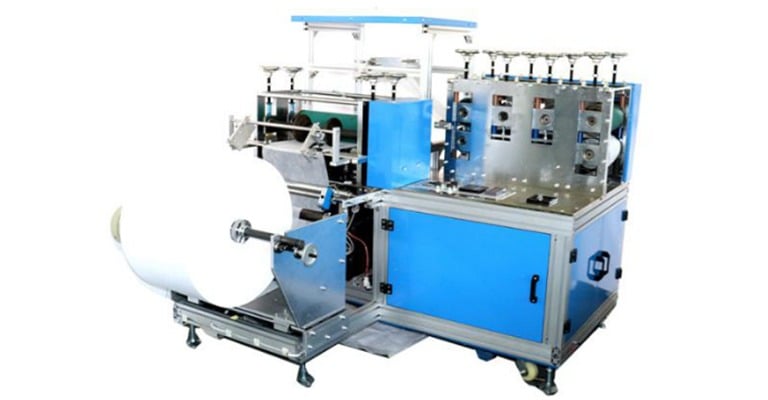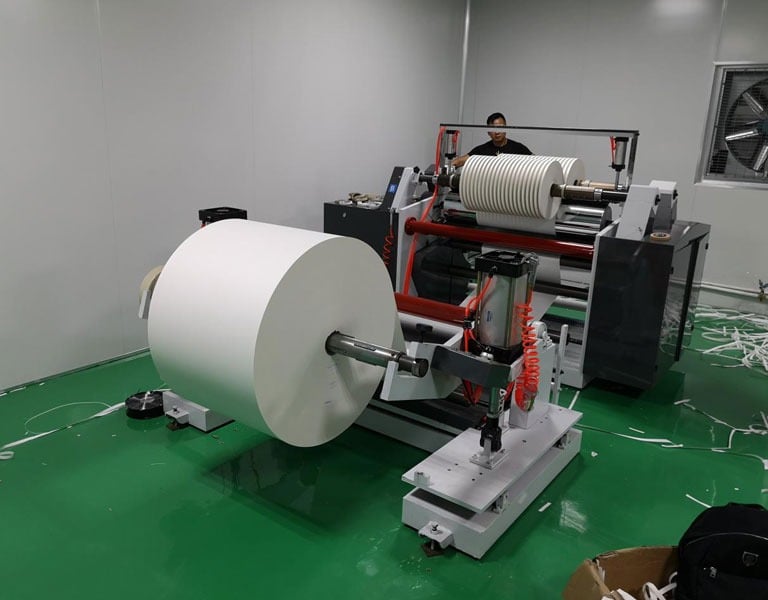Revolutionizing Manufacturing: The Ultimate Guide to Automated Production Machines
LEON MACHINERY
3/1/20253 min read


In today's fast-paced manufacturing world, automation has become a game-changer. From face masks to paper cups and surgical gowns, automated machines have made production faster, more efficient, and cost-effective. This guide explores various cutting-edge machines, their benefits, and how they contribute to different industries.
Face Mask Machine: Efficiency in PPE Production
The demand for face masks surged globally during the pandemic, making automation crucial. A full automatic face mask machine streamlines production by integrating fabric alignment, ultrasonic welding, nose clip cutting, and ear loop attachment. This ensures consistent quality and mass production without human intervention.
Key Features of Face Mask Machines
High-speed production capacity
Multi-layer fabric integration
Automated ultrasonic welding for durability
Minimal human supervision required
Cap Making Machine: Meeting Industry Demands
Caps are widely used in medical, food, and industrial sectors. The bouffant cap making machine automates cap production using non-woven fabric and elastic bands, ensuring a dust-free and hygienic environment.
Benefits of Bouffant Cap Making Machines
Fully automated process from material feeding to final product
Customizable cap sizes and materials
Energy-efficient and cost-effective production
Shoe Cover Machine: Enhancing Hygiene Standards
Both plastic and non-woven shoe cover making machines help industries maintain cleanliness. Whether it’s disposable PE shoe covers or fabric alternatives, automation reduces labor costs while increasing production rates.
Why Choose an Automated Shoe Cover Machine?
High-speed output reduces manual labor costs
Precision cutting and sealing enhance durability
Ideal for hospitals, laboratories, and cleanroom environments
Paper Box Gluing Machine: Precision and Speed in Packaging
Paper box gluing machines are essential in food packaging, medical supplies, and retail. They offer automatic folding, gluing, and shaping for various box types, including hamburger boxes and takeout containers.
Advantages of Paper Box Gluing Machines
Ensures strong adhesive application for secure packaging
Works with various paper thicknesses and designs
Reduces manual errors and speeds up production
Surgical Gown Making Machine: Automation in Medical Supplies
The need for surgical gowns has skyrocketed, especially in healthcare settings. Medical gown making machines produce high-quality protective gowns through automated cutting, stitching, and sealing.
How It Benefits the Medical Industry
Reduces production time and labor costs
Consistent stitching ensures reliable protection
Customizable gown sizes and materials
PE & TPE Plastic Gloves Making Machine: Essential for Safety
From medical to food handling, disposable gloves are indispensable. PE & TPE plastic gloves making machines streamline production through automatic sealing and cutting, ensuring uniform quality.
Key Features of Disposable Glove Machines
Supports various materials like LDPE and TPE
High-speed production reduces manual labor
Ideal for healthcare, food, and industrial sectors
Paper Cup Making Machine: Sustainability in the Beverage Industry
Paper cups have replaced plastic cups due to environmental concerns. Advanced machines like the FBN-588 and FBN-900 automate the process from paper feeding to knurling, sealing, and stacking.
Why Invest in a Paper Cup Machine?
Produces both single and double PE-coated cups
High production speed for commercial use
Durable and leak-proof cups for beverages
Cartoning Machine: Automating Product Packaging
Cartoning machines like HT-ZH100L provide efficient packaging solutions for various products, from pasta to pet food. They handle vertical motion cartoning, ensuring safe and compact packaging.
Key Benefits of Cartoning Machines
Fully automated system reduces manual labor
Compatible with various packaging materials
Ensures precise and uniform product placement
Paper Straw Machine: A Sustainable Alternative to Plastic
With the global shift towards eco-friendly products, paper straw machines play a vital role in reducing plastic waste. These machines automate paper feeding, gluing, rolling, and cutting to produce high-quality paper straws.
Features of a Paper Straw Machine
High-speed production with minimal waste
Supports multiple layers for added strength
Compatible with different straw sizes and designs
Straw Packing Machine: Efficiency in Beverage Industry
From single straw packaging to group packing machines, automation ensures hygiene and efficiency. These machines handle counting, feeding, printing, and cutting to streamline packaging operations.
Why Choose an Automated Straw Packing Machine?
Improves efficiency with bulk packaging
Ensures hygienic and contamination-free handling
Customizable printing options for branding
Paper Slitting Machine: Precision Cutting for Paper Industries
Paper slitting machines enhance production efficiency by cutting large paper rolls into smaller, precise widths. With high-speed operation and minimal waste, these machines are essential in paper product manufacturing.
Key Advantages of Paper Slitting Machines
High precision cutting with adjustable width settings
Compatible with various paper materials
Reduces material wastage and improves productivity
Conclusion: Embracing Automation for a Competitive Edge
The world of manufacturing is evolving rapidly, and automation is at the forefront of this transformation. Machines like face mask makers, surgical gown producers, and cartoning units not only improve efficiency but also ensure product consistency and quality. Businesses looking to scale their operations must embrace these technological advancements to stay competitive in the market.
By investing in automated manufacturing machines, industries can reduce costs, increase productivity, and meet growing demands with ease. The future of manufacturing lies in automation—are you ready to take the leap?


